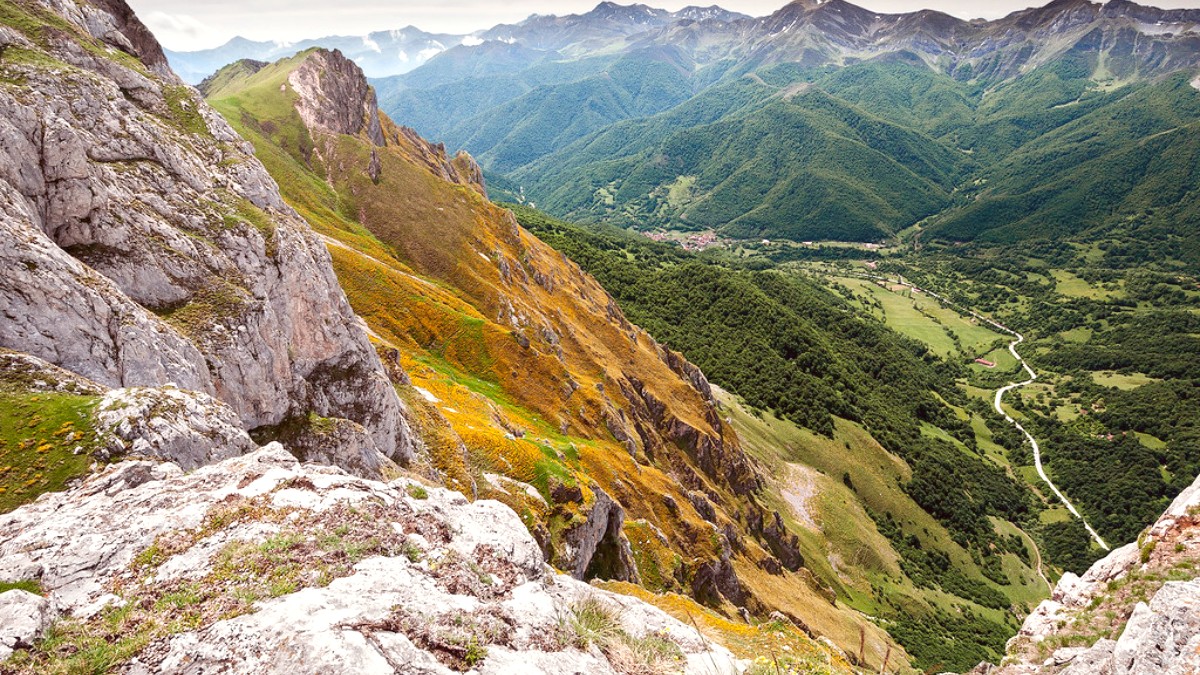
Spain
The cuisine evolved from the necessity of sustenance in a demanding environment, focusing on local produce and game. Cheese-making reflects centuries of pastoral life.
Key ingredients include pork, beef (Asturian Casina breed), lamb, game meats, white beans (Fabes), a variety of artisan cheeses, and seasonal wild mushrooms.
Lunch is typically the main meal (2 PM - 4 PM). Dinner is later (from 9 PM onwards). Bars serve tapas earlier.
Tipping is not as ingrained as in the US. A service charge is usually included. Rounding up or leaving 5-10% for excellent service is appreciated.
Natural cider is poured from a height (Escanciado) to aerate it. Drink small pours immediately, without sipping.
A rich bean stew with Asturian white beans (Fabes), shoulder pork (Lacón), chorizo, and Morcilla (blood sausage).
Find in traditional Asturian restaurants.
Two large, thin veal or beef fillets, stuffed with cured ham and cheese, then breaded and fried. Served with fries.
A popular Asturian dish, found in most traditional eateries.
A chickpea-based stew from the Liebana Valley, featuring chickpeas, cabbage, potatoes, and various meats.
A comforting meal around Potes.
A creamy rice pudding, often with a caramelized sugar crust.
Light, buttery sponge cakes from Cantabria, for breakfast or with coffee.
Limited directly within Picos. For fine dining, consider larger cities like Oviedo or Santander. Within Picos, some high-end hotel restaurants focus on quality local ingredients.
Abundant in towns like Cangas de Onís, Potes, and Arenas de Cabrales. Often family-run, serving traditional, hearty dishes.
Bars (Bares) form the backbone of casual dining, serving affordable tapas, Bocadillos (sandwiches), and Raciones (shared plates).
Can be a challenge in traditional meat-centric restaurants. Most places prepare salads, grilled vegetables, or Tortilla de patatas (without ham).
Always clarify "sin carne" (without meat), "vegetariano" (vegetarian), or "vegano" (vegan).
Awareness is growing. Major supermarkets sell gluten-free products. Inquire about ingredients and allergens in restaurants.
A Translation card helps communicate specific needs. Halal/kosher options are extremely limited, plan to self-cater.
Visit producers in Arenas de Cabrales to see cheese-making and cave maturation, includes tasting.
Experience Asturian cider culture at a Sidrería, learn 'escanciado' and enjoy local dishes.
Local village festivals feature traditional food and drink, common in summer and autumn.
Gather local cheeses, cured meats, and bread for a picnic amidst stunning mountain scenery.
Flavors are strong, satisfying, and reflect the region's agricultural heritage.
Slow-cooked preparations extract deep tastes from local ingredients.
Seasonal ingredients, including wild mushrooms, are celebrated.
Local produce forms the base of many dishes, ensuring freshness.
Spanish wines from Rioja and Ribera del Duero are widely found.
Local bars serve as the best spots for casual, affordable dining and experiencing local life.
Spanish potato omelette, a national staple found everywhere. Can be made without ham for vegetarians.
Cured ham, often sliced thin and served as a tapa or part of a platter.
Though not a wine-producing region, good Spanish wines are available.
Fresh milk and dairy are the base for the region's famous cheeses.
Directly supports local pastoral communities.
Traditional methods for curing pork and beef are a highlight.
Available in local delis and markets for authentic flavors.
Locals appreciate attempts at Spanish, even just "Hola" and "Gracias."
Bread is customary and often served with meals, sometimes for a small charge.
If drinking Asturian cider, prepare for the traditional pouring technique and drink small amounts at a time.
Exploring the diverse flavors of Picos de Europa is a journey of taste. Embrace the local traditions, from hearty stews to pungent cheeses and unique cider.